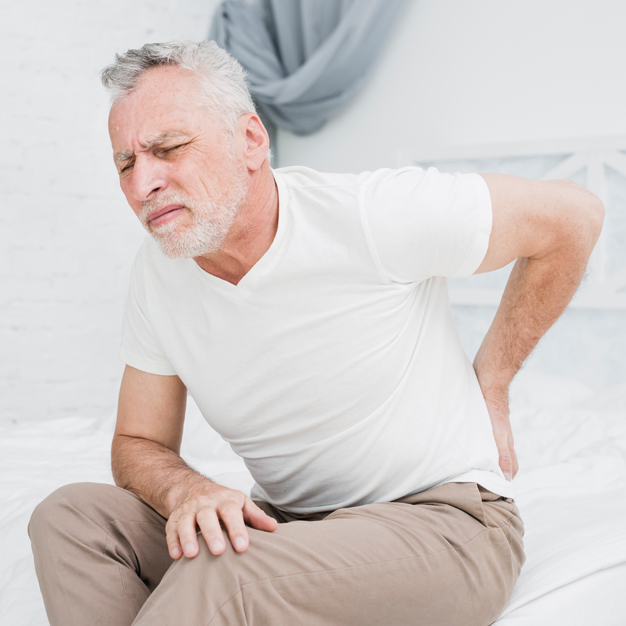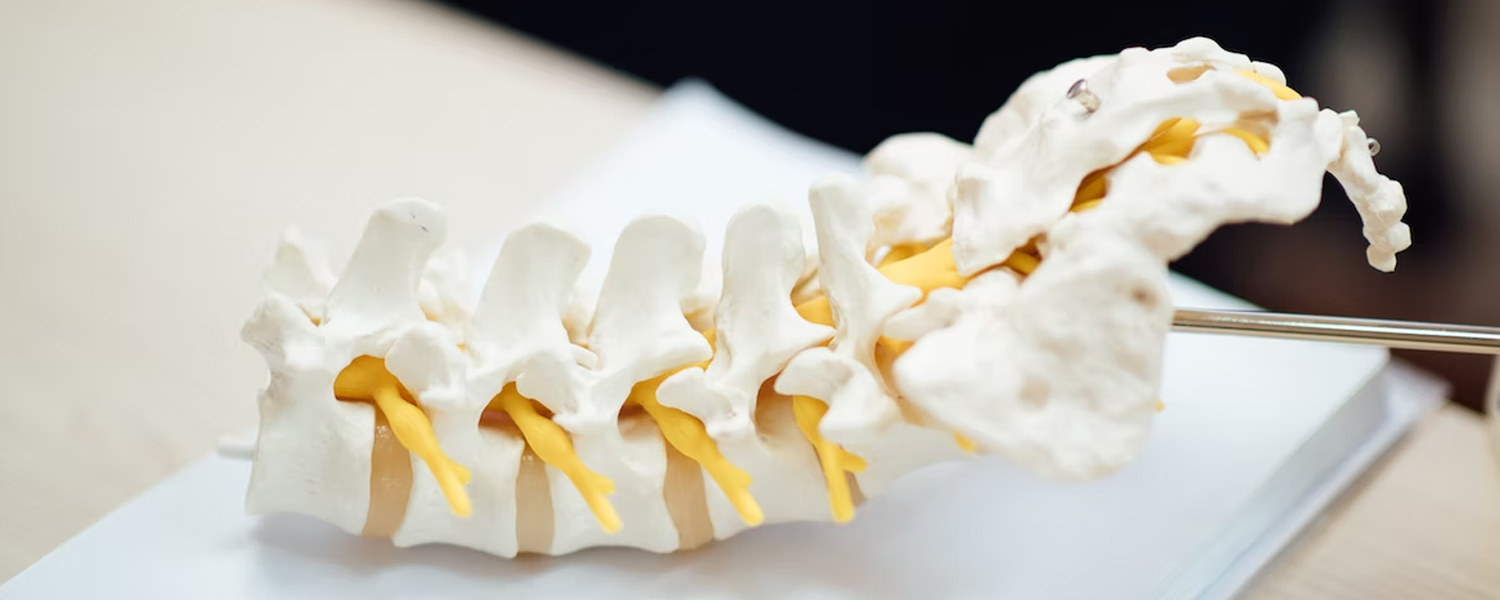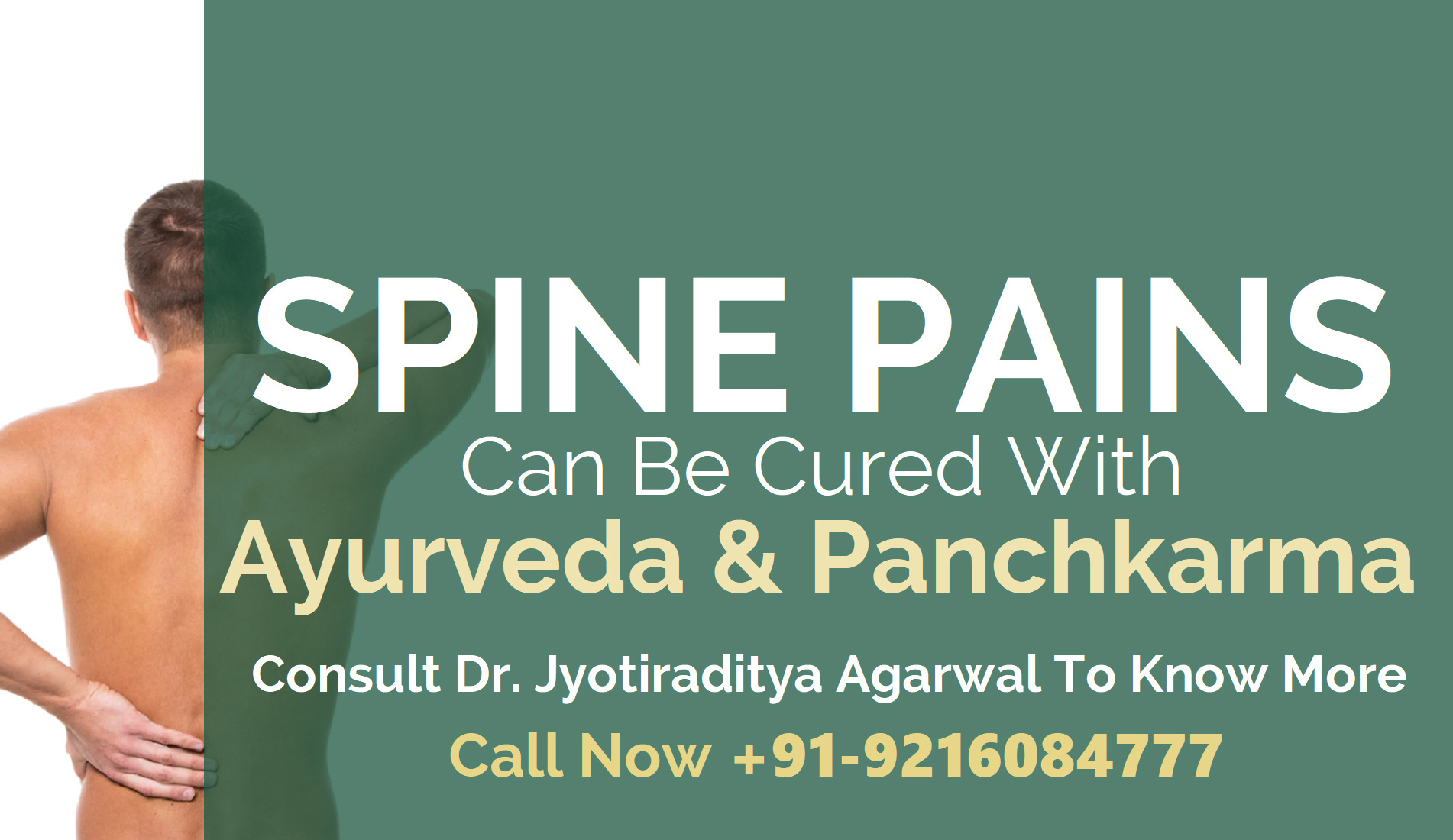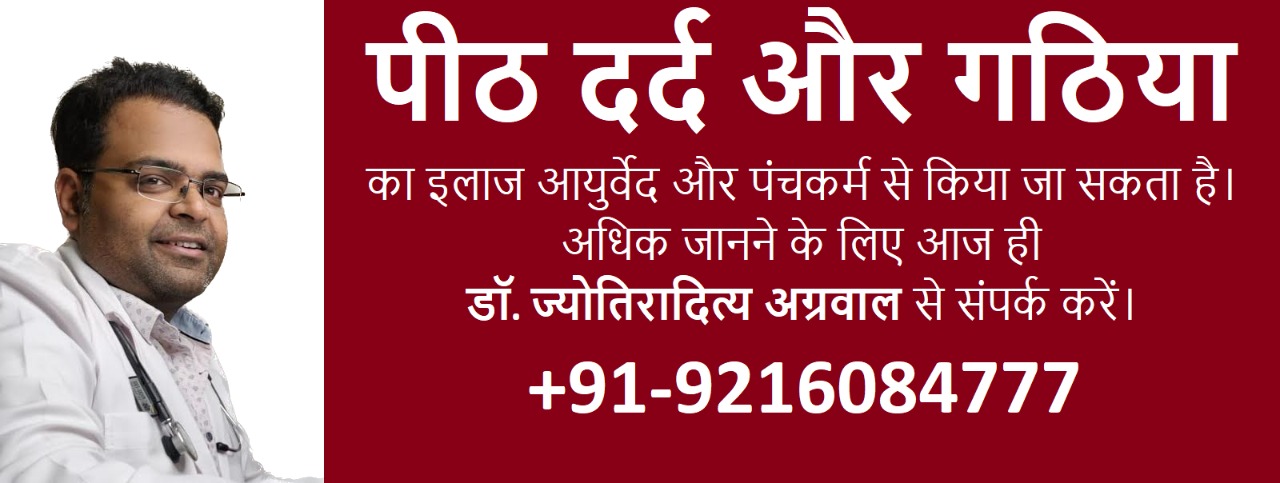
Spinal Disc problems have become quite common these days. Nidanam Wellness Ayurveda clinic has made a big name in achieving great success in treating people with spinal disc problems. The ayurvedic treatments given along with the panchkarma detoxifications work wonders in accomplishing the cure to several disc-related issues. In Modern medical sciences, surgeries are widely suggested, to the contrary Ayurvedic treatments can treat about 95 % of Spine disc problems with the aid of ayurvedic medicines and panchkarma. Nidanam Wellness Ayurveda clinic specializes in treating spine disc problems.
The Spinal Disc is a jelly-like cushiony structure attached firmly to the vertebrae. It is somewhat round in shape. They are about 23 in number. The disc is placed between the two vertebrae and acts as a shock absorber in case of any sudden jerk. The intervertebral disc consists of two distinct parts namely the nucleus pulposus (the outer portion of the disc) and annulus fibrosus (the inner portion of the disc). These are hydraulically sealed with each other which helps in the uniform dissemination of the pressure on the spine.
See what our clients say
I am happy with my back pain treatment at Nidanam wellness clinic. I was suffering from back pain for two years. MRI showed a nerve compression. With panchkarma and ayurvedic treatment, my back pain is gone in just 14 days. Recommended to all.
–Hitesh
I want to thank Dr. Jyotiraditya for treating my sciatica problem. I was suffering from sciatica since my college days and traveling had become a challenge. With 7 days of panchkarma treatment. My sciatica problem is all gone. Thanks to the Doctor again.
–Rohan
What causes spinal disc problems?
1. Muscular problem – this is one of the common spinal issues that is mainly contributed by the strain in the spinal musculature. Abnormal pull, stretch beyond limits, muscle torn due to heavy lifting, imbalanced lifting, or overuse of a particular spinal muscle may lead to such a problem. The pain, in this case, is often associated with stiffness and the patient commonly complains of breaking pain. Muscular pain may also arise because of a sedentary lifestyle and lack of physical activities. Degenerative disc – The intervertebral discs act like shock absorbers structures, and degeneration in the disc can cause localized pain. Privation of nutrition, and lack of hydration, resulting in the loss of height of the spinal disc. This consequences in the narrowing of the disc space causing spinal nerve compression. This causes pain. Sciatica pain is a classic example of this issue.
2. Herniated disc – the disc may become herniated (ooze out) with constant wear and tear of the tissues in day-to-day life. It may also herniate because of compression caused by a sudden jerk, triggered due to heavy lifting, accidents, direct impacts or injuries on the back, obesity etc. In such a situation, the inner tissue of the spinal disc leaks out from its position poking the nerve and causing severe back pain. Herniated discs can occur anywhere in the spinal cord but are mostly seen in the lumbar spine region. Most of the time, sciatica pain occurs due to a leak of the soft tissue from the lumbar L4-5 and L5-S1.
3. Spondylolisthesis – It is the outward slip of the upper vertebrae disc, from beneath that results in a condition called spondylolisthesis. This condition is commonly come across in the lower lumber vertebras. It can lead to nerve compression that may end up in sciatica pain.
4. Osteoarthritis – osteoarthritic changes are age-related changes occurring in the body with ageing. The impact of natural ageing is seen in the joint as an individual grows’ old. The spine also faces the consequence of this ageing effect. The cartilage present in the joint gets worn out. In advanced stages, spur (abnormal outward growth of a bone) may develop, resulting in inflammation of the affected area, thereby causing pain. If this spur arises, a nerve pinch might also materialize, resulting in nerve pain.
5. Spinal stenosis – The reduction of space of the spinal canal or the intervertebral foramen is called spinal stenosis. It may initiate nerve compression and cause nerve pain. This compression in the spinal cord eventually graduates in leg pain. This leg pain may cause difficulty to walk for a small distance, a medical condition known as neurogenic claudication. In some extreme situations, this compression may also hinder bowel movements, especially evacuation, shrinkage in the leg muscle, bladder dysfunction etc.
6. Obesity – Obesity remains one of the most prominent causes of back pain. According to a survey conducted by American scientists, it was seen that obese individuals suffer from back-related issues at least once in their lifetime. Obesity invites many medical conditions including diabetes, hypertension, skin problems and spinal disc problems.

Facts about spinal problems
1. The spine has two parts which are prone to maximum spinal injuries or problems. One is the set of cervical bones that is seven in number, and the other is the lumber bones which are five in number. These are the parts that are most susceptible to injuries.
2. Disc rupture mostly in people within the age group of 30 to 50 years.
3. The most common cause of spinal disc problems is muscular pain, primarily caused due to incorrect posture.
4. With proper care and rest, a ruptured disc can heal by itself.
5. Care of the back is essential. It includes maintaining right sitting and laying down postures and avoiding heavy lifting.
6. Yoga and Physical Training exercises help a lot in maintaining proper spinal posture as well as flexibility. It is also helpful in strengthening the back muscles.
7. 95% of spinal disc problems can be treated without surgical intervention.
8. Spinal disc problems are diagnosed primarily with a physical examination by a doctor. For precise diagnoses, investigations like radiograms, CT scans, and MRIs may prove helpful.

Signs and symptoms of spinal disc problems
The main presentation of lower back issues is in the form of pain.
Lower back pain is categorised into the following categories
1. Acute back pain– Acute means “severe”. Acute back pain is a condition that involves excruciating pain in the back that comes up abruptly. This pain is a consequence that originates from spasms in muscles. Acute back pain may also be a result of a ruptured disc.
2. Chronic back pain– This category involves individuals who suffer from back pain that carries for more than six months. It usually occurs in people with untreated or undiagnosed back pains. There is a dull and diffused pain sensation that arises, which may or may not be associated with muscle spasms or stiffness. This pain aggravates on exertion, particularly on bending forward, while walking, or laying in one position for a longer duration. Without proper care, this condition may end up in a spine deformity.
3. Sciatica pain– Sciatica is a commonly used word, to describe severe back pain that radiates towards the lower extremities. Sciatica is the name of a nerve, which usually gets pinched, due to various factors, thus getting associated with the pain. The pain that radiates through this nerve track is referred to as sciatica pain. This nerve pinch can have a variety of reasons like disc rupture, disc prolapse, dislocation, etc.
4. Neurological symptoms– if the nerve compression is of a severe form, it may manifest into numbness or loss of sensation in one or both the lower limbs. There may also be incontinence in bowel movements or paralysis of lower limbs, in some aggravated forms.
5. Tilting trunk– In some cases, a slight tilt is seen in the posture to a particular side. Usually, a forward tilt of the trunk may contribute to back pain.
6. Restricted movements– The patient is not able to move his back because of various reasons.
7. Tenderness– tenderness in the back may also be another reason that may be a consequence of spinal disc problems.
What is the Ayurvedic treatment for Spinal Disc problems?
According to Ayurveda, pains are caused in the body by the aggravation of vata dosha. If the spine is involved then a tissue, known as majja dhatu is bound to be affected by this aggravated vata. This tissue acts like a cushioning substance in the vertebral column, and also provides support to the skeletal muscular structure.
The alignment issues in this cushioning substance (majja dhatu), resulting in pain in the spine. Pain is the chief complaint if the spine health is compromised which may or may not be accompanied by a nerve pinch.
Dr. Jyotiraditya Agarwal, the chief vaidya at Nidanam Wellness Ayurvedic clinic, not only helps in pacifying pains but also treats the chief cause of the problem.
To know more about the treatment protocol, kindly contact us at the numbers mentioned.

